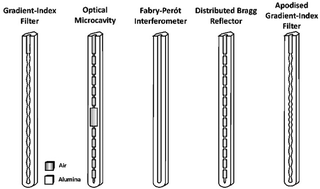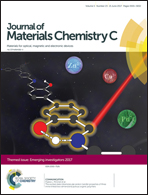Nanoporous anodic alumina photonic crystals: fundamentals, developments and perspectives
Abstract
The control of light – its coupling, splitting, modulating, and filtering – is of fundamental importance for the development of advanced, life-changing technologies, which are expected to revolutionise our society in the near future. Photonic crystal structures with finely tuned optical properties will pave the way for the realisation of these technological advances, enabling the ultimate control and modulation of electromagnetic waves across the spectral regions, from UV to IR. In recent years, an intensive research activity has been focused on the development of advanced photonic crystals. In spite of these technological advances, more fundamental and extensive development and engineering of photonic crystal structures will be needed in the next years to achieve the control of light for innovative technologies based on the quantum nature of photons. Nanoporous anodic alumina (NAA) was long envisaged as a platform to develop photonic crystal structures due to the versatility of its nanoporous structure. Recent studies have demonstrated that the effective medium of NAA can be precisely engineered by rationally designed anodisation strategies. These studies open new opportunities to develop advanced photonic crystal structures based on this nanomaterial, which could find broad applicability across different fields and disciplines. In this scenario, this review introduces the fundamental development of NAA-based photonic crystals and summarises the recent advances and applications in this field.

- This article is part of the themed collections: Recent Review Articles, 2017 Journal of Materials Chemistry C HOT Papers and Journal of Materials Chemistry C Emerging Investigators

 Please wait while we load your content...
Please wait while we load your content...